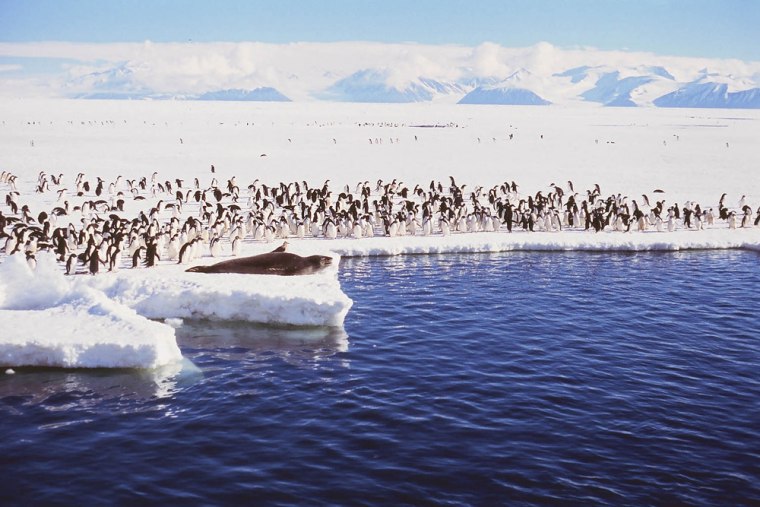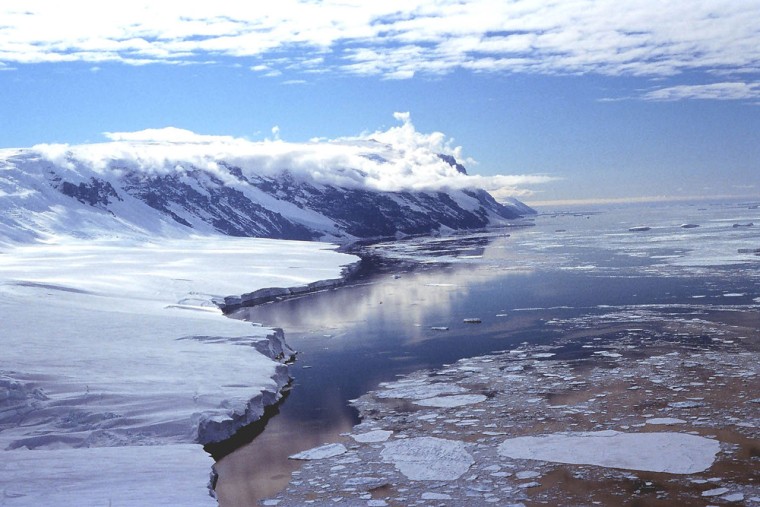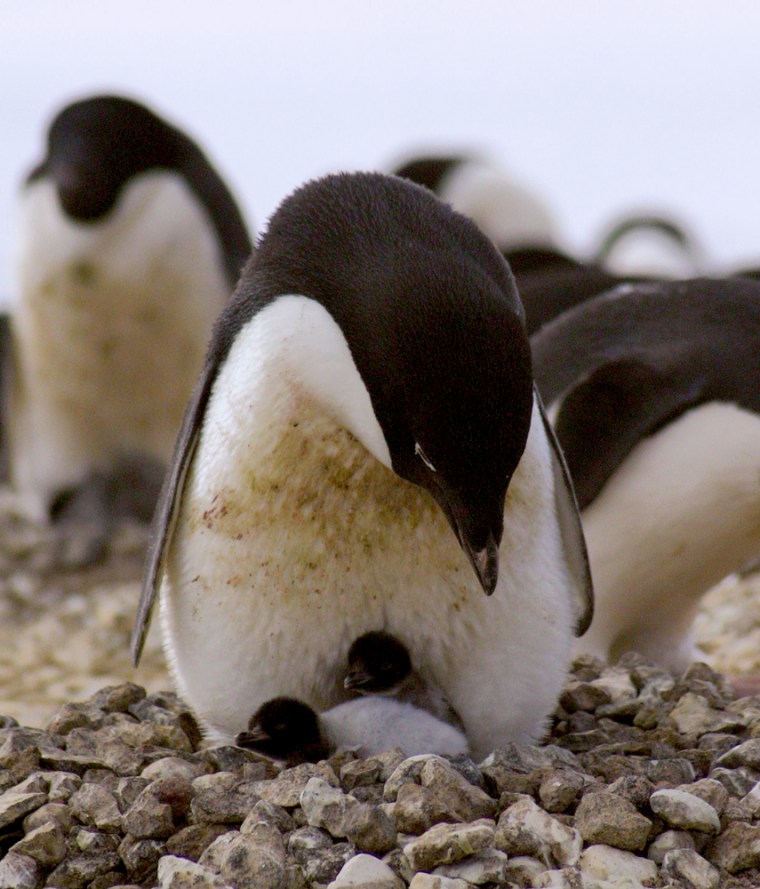The breakup of giant icebergs may have forced minor evolutionary changes in penguins over the past 6,000 years, a new study suggests.
The Antarctic iceberg chunks, which break off the continent now and then, are thought to have blocked the swim paths of Adelie penguins returning home to their colonies. Some of the penguins were forced to become immigrants in other colonies, where they established new homes and interbred with the locals.
As a result, genetic changes that might otherwise have remained isolated became widespread among the different colonies. The result is what scientist call microevolution.
Microevolution involves small-scale genetic changes in a species over time. The classic example is a color change undergone by British pepper moths in response to changing levels of air pollution. The acquisition of antibiotic resistance by bacteria and the trend towards tusk-less elephants in Africa are also examples of microevolution at work.
Because it is so well documented, many people who don't believe that evolution can lead to the creation of new species accept that microevolution occurs.
Most microevolution studies involve change over very short time periods, on the order of decades or a few hundred years. The detection of microevolutionary changes over longer time periods has been difficult because it requires that ancient DNA deposits be found together with samples from modern populations of the same species.
Adelie penguins may be the ideal candidates for such research. The penguins often live, breed and die in the same colonies where they were born and where their ancestors before them lived. And the remains of ancestor birds are well preserved in distinct layers of the frigid terrain, making fossil dating relatively easy.
For the study, the researchers extracted DNA from the bones of 6,000-year-old penguins and compared them to the DNA of their modern descendents. In particular, they looked at various genes made up of short stretches of repeat DNA sequences, called "microsatellite DNA."

Comparisons between the ancient and modern sequences revealed that the DNA sequences for some of the genes had gotten longer over time. The frequency of some of the different genes had changed as well: New variations had come into existence while others had been phased out.
Iceberg-driven evolution
One surprising finding was that there wasn't much genetic variation between different penguin colonies. Because adult penguins tend to return to the nesting colonies used by their ancestors, little interbreeding would be expected to occur between colonies. Over time, this would lead to genetic differences between colonies.
"Originally these colonies were almost certainly very different from each other," said David Lambert from Massey University in New Zealand, the principal investigator of the study. "[But] over time they've become the same."
Something was causing the penguins to break from their normal behavior and interbreed with members of different colonies. One idea was that the breakup of mega-icebergs was blocking the swim paths of penguins and forcing them to migrate to more accessible colonies.

To test their hypothesis, the researchers tracked the movements of nearly 10,000 penguins. The birds had been banded as chicks and came from three different colonies. In 2001, a section of the mega-iceberg B-15A grounded near the colonies. By tracking the banded penguins, the researchers discovered that many of them couldn't return to their home colonies. Some of the displaced birds were able to assimilate into other colonies and to interbreed with the locals.
The researchers think icebergs may have been a constant evolutionary pressure for the penguins and estimate that there have been about 200 such events within the past 10,000 years.
The study was published online on Monday by the Proceedings of the National Academy of Sciences.
